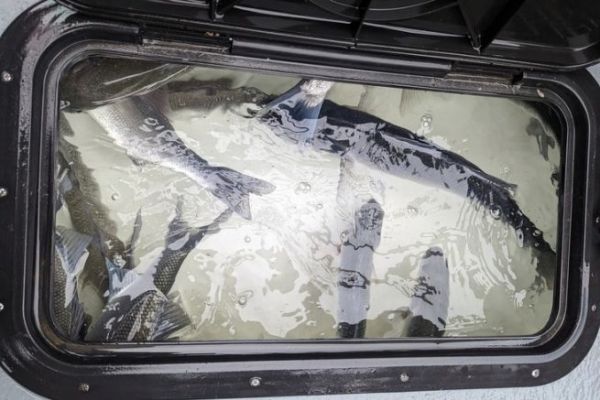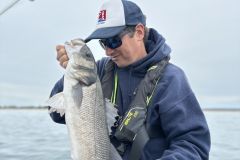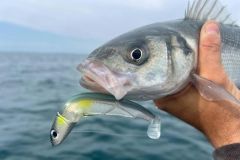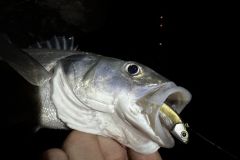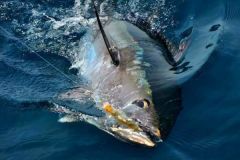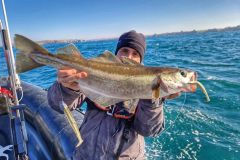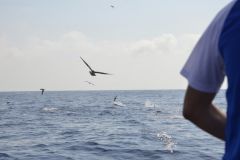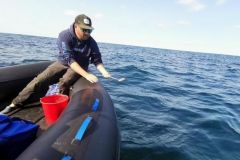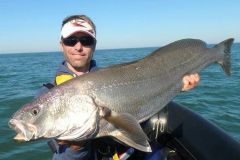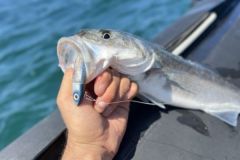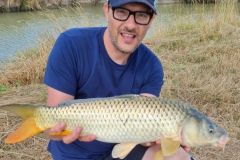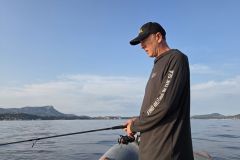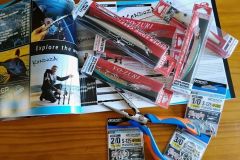Particularities of summer sea bass fishing
Sea bass behavior in summer
In summer, sea bass tend to move to deeper, cooler waters during the day, but return close to shore early in the morning and late in the day to feed. Rocky areas, shipwrecks and seagrass beds are ideal places for sea bass to hunt. It is therefore essential to prospect these areas at the right times to increase your chances of catching them.
Summer conditions
Summer water temperatures can vary considerably, influencing sea bass behaviour. Optimum fishing times are generally early morning and late afternoon, when water temperatures are cooler. Rising and falling tides are also more productive than slack water. It's important to take these factors into account when planning your fishing trips, whether using a vibrating blade or other techniques.
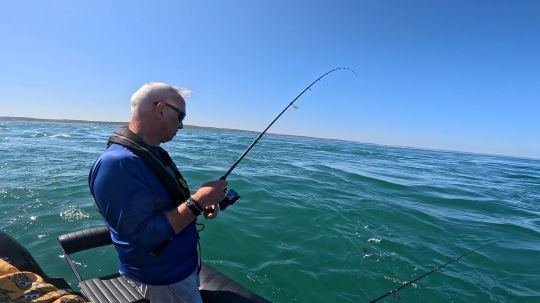
Equipment suitable for vibratory feeders
Rod and reel
For summer vibrating blade fishing, a 2.40 to 3-metre rod with 10 to 40 grams of power is ideal. Beware, blades can be heavy for casting far (especially from shore). Plan your rod power accordingly. A 10-40 is a good compromise for accurate casting and good sensitivity to detect bites. The reel should be suitable for sea fishing, with good line capacity and a powerful drag. A reel size 2500 to 3000 is generally recommended.
Leaders and lures
The choice of leader is crucial for vibrating blade fishing. A 20 to 30 lb fluorocarbon leader is recommended for its discretion and strength. As for lures, medium-sized vibrating blades (30 to 60 mm) are ideal for summer. Silver and gold colors are often effective, but feel free to try out different colors depending on light conditions and water turbidity, following the same principles as with surface lures.
Specific techniques
Choice of spotlights
In summer, sea bass often concentrate near underwater structures such as rocks, wrecks and sea grass beds. These areas offer shade and hiding places, as well as an abundance of prey. It is therefore essential to prospect these spots at the right times. Estuaries and coastal areas with currents are also productive spots.
Technique: throwing and retrieving
The drag-cast technique is the most common for vibrating blade fishing. Cast your lure close to underwater structures and bring it back in jerks to imitate the movements of a wounded fish. Vary the retrieve speed and add pauses to make the lure more attractive. In summer, bass can be more lethargic, so a slower retrieve may be more effective. Blades are heavy, so the slower you fish, the deeper you'll go! Survey the entire layer, starting at the surface
When to choose tuning fork?
They have the advantage of not yet being widely used and can make all the difference in heavily fished areas. They are particularly effective when bass are on the move or hunting. They will enable you to fish far from the boat or the shore and be particularly discreet. My favorite is Hayabusa's range of vibrating blades (Furifuri and Makimaki), which I'll introduce in another article.
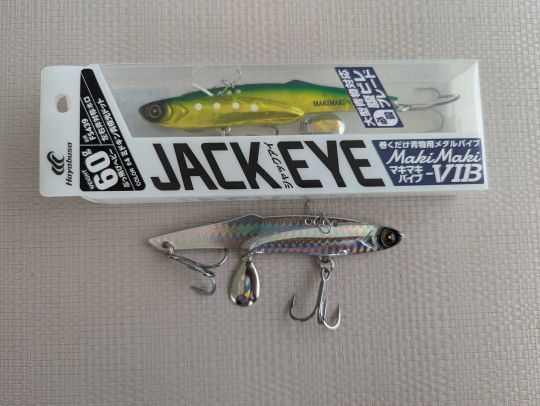
Summer sea bass vibrating blade fishing offers unique opportunities to catch our iconic fish. By understanding summer sea bass behavior, using the right equipment and applying season-specific techniques, you can maximize your chances of success and make a difference on difficult days.

 /
/ 